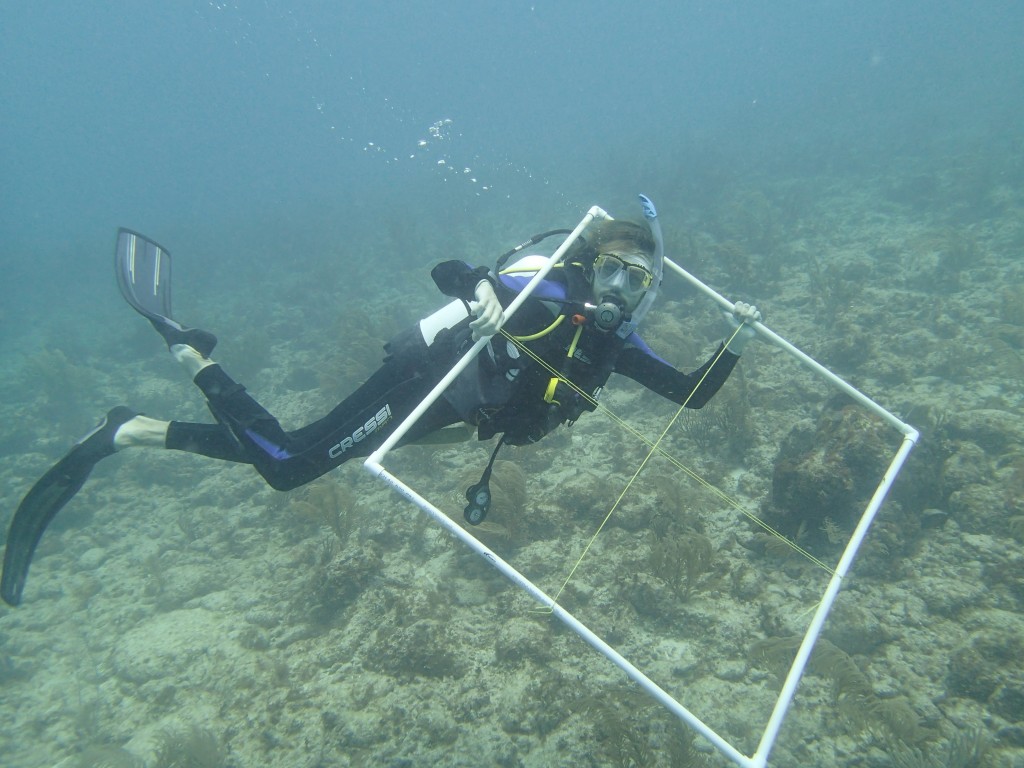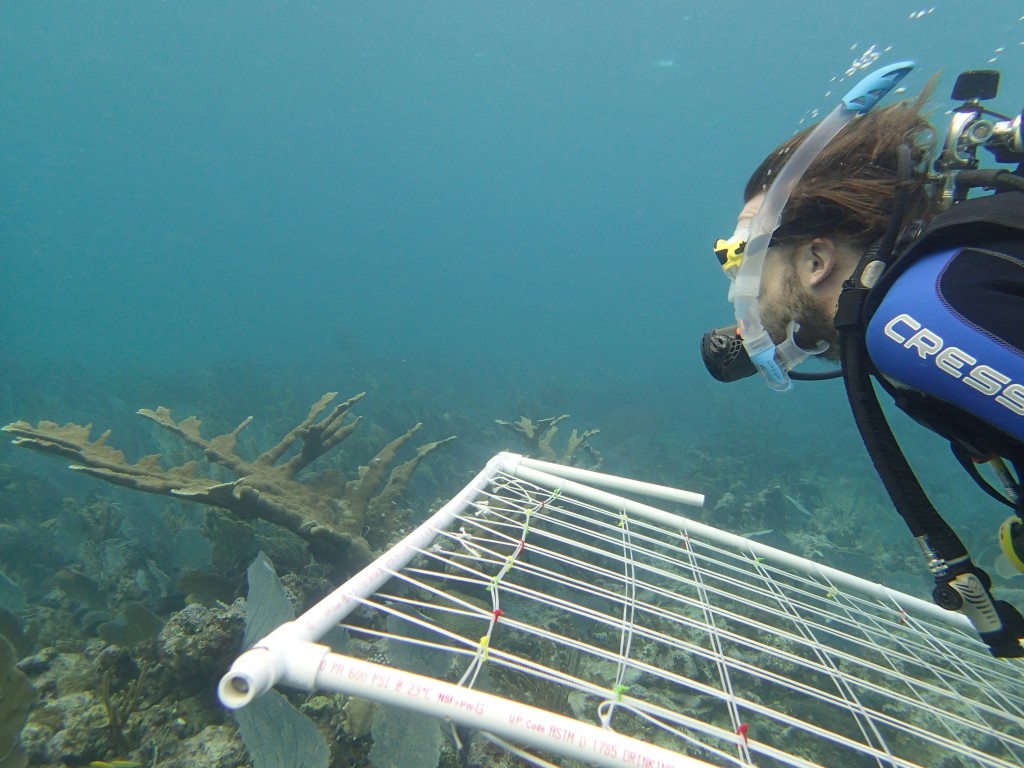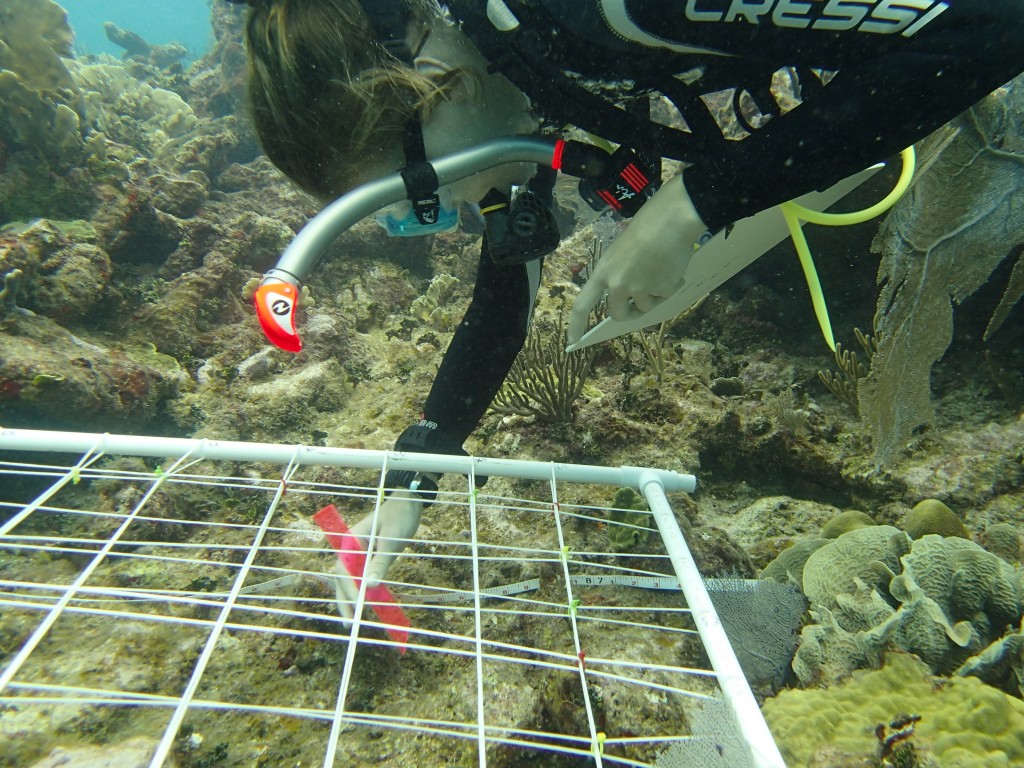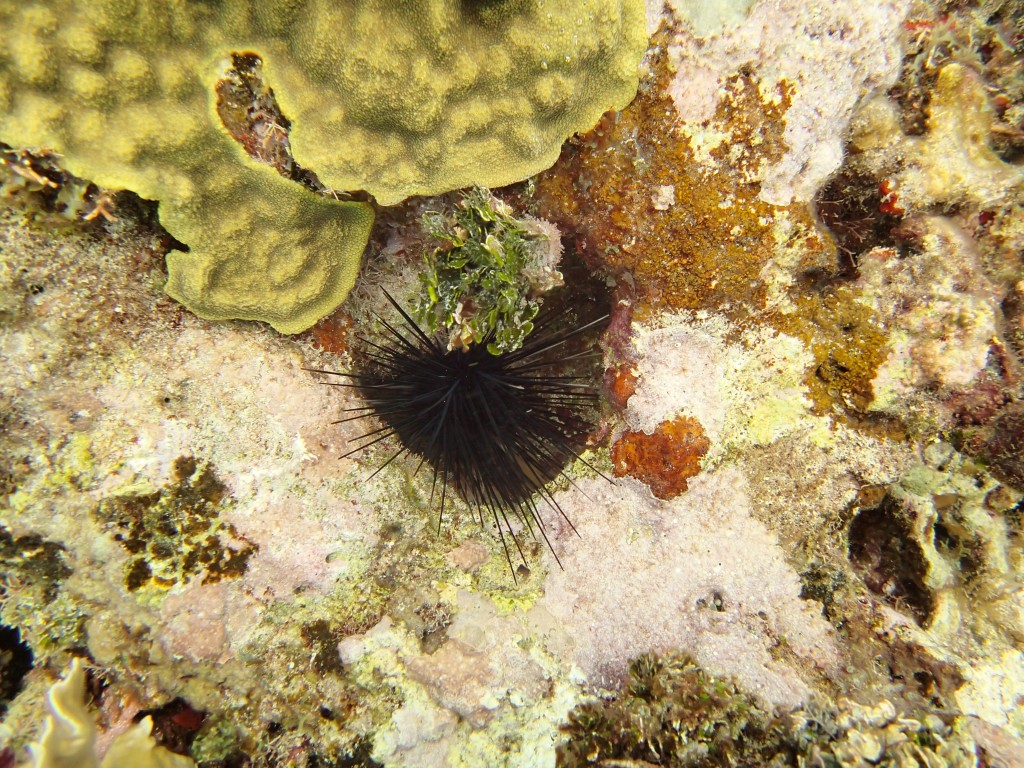By Joakim Andersen & Sabina Larsson, BV volunteers, Belize
Sabina 12 meters below:
Point number 1: Dictyota 20 mm, point number 2: Halimeda 75 mm, point number 3: Dictyota again, 20 mm, … point number 10 – no idea what that algae is! Sarah comes swimming with her dive knife (which is not as rusty as mine) and a numbered plastic bag. Once the alga at point number 10 is safe in my BCD-pocket the survey continues. The points are systematically spread out in a 1×1 meter quadrat made of pvc-pipe, which is gently put down on the reef along a transect tape. Thanks to its weighted legs the surge mostly affects the person above it, which is hard enough. With a slate in one hand and a pink ruler in the other the purpose is to find ten algae in each quadrat. The water is 26 ˚C and the visibility is around 15 meters here, 12 meters below the surface at one of our monitoring sites, Alleys.
To motivate hanging upside down an hour a day in often rough swells of water, it helps to have a bit of background. In the 1980s a waterborne pathogen wiped out a great deal of the Caribbean population of the long-spined urchin, Diadema antillarum. This and other urchin species are essential for the reef as they graze on algae, which can otherwise potentially overgrow corals. The survey we volunteers take part in aims to find out how well the urchins are recovering by collecting data on the urchin species present as well as the abundance and height of different algae in the same areas. The recovery of the long-spined urchin population has been slow so far, but hopefully a better understanding about the urchin and its interaction with other species of urchins as well as algae will lead to actions for a faster recovery.
Joakim 5 meters below:
The 30 meter transect tape is rolled out and a weight attached to a line is put down on the 5-meter mark. I stretch out the line creating a 1.78 meter radius of a 10 m2 circle. A search for urchins is about to begin. While I am slowly moving in a circle my search buddy is hanging upside down looking in every crevice of the area with a torch to find the nocturnal little animals. We have barely begun when I spot the first urchins of the day – two Diadema in an Elkhorn coral (Acropora palmata), just outside the survey area. Inside the area, at first, the urchins are nowhere to be seen, but by the time my buddy has finished her search 15 minutes later, a couple of small urchins of the three other genera commonly found at Bacalar Chico Marine Reserve have been recorded on the slate together with their depth and diameter.
My turn. Moving on to the next point of the transect I align myself in the vertical search position and begin the search. Like the algae below me I am moving in the surge – the depth being no more than a few meters here at Moose Country and the sea state for the day is rough. Unlike the algae though, I lack a holdfast so when after a short search I find my first urchin I lose it just as quickly when another wave gets hold of me and moves me a meter to the side. To find it again, to note the depth, diameter and species, is easier said than done since the urchins most commonly found are on a centimetre scale. I do find it again though, a 10 mm rock-boring urchin, and receive a bonus in form of a 5 mm reef urchin right next to it. When you after a while have got used to the wavy action the search gets easier, and a whole bunch of rock-boring urchins are added to the list together with a beautiful slate-pencil urchin.
At the end of the day the mysterious algae in the numbered plastic bags are photographed and examined more closely next to the algae appendix in our reef coral identification book. It is a great book for coral, but only covers the main types of algae found on the reef. The algae in point number ten remains mysterious and is stored in a jar filled with alcohol, adding up to the collection on Sarah’s bookshelf in the wait for the algae bible to arrive from the UK.





